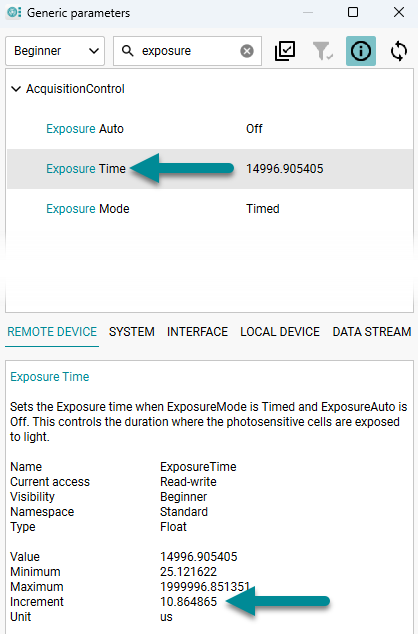
IDS peak 2.17.1 / uEye+ firmware 3.70
IDS Peak comfortSDK, genericSDK, IPL, and AFL developer manuals are external documents. Please contact us if you need them.
The exposure of rolling shutter sensors starts sequentially row by row, see Shutter methods.
The rows are read out as soon as their exposure ends. The read-out duration depends on various factors, such as:
•Sensor
•Pixel format
•ROI (region of interest)
•Decimation and binning
The camera generates the following internal signals:
Signal |
Description |
|---|---|
ExposureActive |
TRUE during exposure of the pixels, starting with the first and ending with the last row. |
ExposureStart |
Indicates the start of exposure (= start of "ExposureActive"). |
ExposureEnd |
Indicates the end of exposure (= end of "ExposureActive"). |
ReadOutActive |
TRUE during the read-out of the pixels. |
ReadOutStart |
Indicates the start of the read-out (= start of "ReadOutActive"). |
ReadOutEnd |
Indicates the end of the read-out (= end of "ReadOutActive"). |
Additionally, the camera generates the following events (see Enabling events), informing a host application about their occurrence:
Event |
Description |
Event data |
|---|---|---|
ExposureStart |
Notify the host application about the start of exposure. |
Corresponding frame ID. |
ExposureEnd |
Notify the host application about the end of exposure. |
Corresponding frame ID. |

Fig. 82: Timing of rolling shutter sensor with sequential frames
Many rolling shutter sensors allow for overlapping frames. This means, that the exposure of the next frame can already be started, while the previous frame has not been finished, yet. In this case, the camera signal "ExposureStart" for the second frame is emitted before the "ExposureEnd" signal of the first frame. This results in an constant "ExposureActive" signal, because at any time, one of the sensor's rows is in exposure - be it for the previous or the following frame.

Fig. 83: Timing of rolling shutter sensor with overlapping frames
